The effects of mixed prebiotics in aquaculture: A review
Weny Wee ,Noor Khaliah Aul Hami ,Khairiyah Mat ,Raja Ili Airina Raja Khalif ,Nor Dini Rusli ,Mohamma Mijanur Rahman ,Muhamma Anamul Kair ,Lee Seong Wei ,**
a Centre for Foundation and Continuing Education,Universiti Malaysia Terengganu,21030,Kuala Nerus,Terengganu,Malaysia
b School of Biological Sciences,Universiti Sains Malaysia,11800,Minden,Pulau Pinang,Malaysia
c Department of Agricultural Sciences,Faculty of Agro-Based Industry,Universiti Malaysia Kelantan,Jeli Campus,17600,Jeli,Kelantan,Malaysia
d Faculty of Fisheries,Sylhet Agricultural University,Sylhet,3100,Bangladesh
Keywords: Growth performance Immunosaccharide Disease resistance Stress relieve
ABSTRACT Aquaculture industry contributes significant aquaculture species production to meet fish protein demand from the world.The industry is gearing towards intensification to increase more production in the near future.Various technologies and efforts were introduced into aquaculture industry to bring it up to the next higher level.However,the development of aquaculture industry is hindered by disease constraint.As a result,excessive use of antibiotics and chemicals were applied to reduce or minimize risk of disease outbreak in aquaculture farming activity.Subsequently,aquacultures products and environment were highly exposed to these antibiotics and chemicals.To resolve this issue,fish farmers were encouraged to utilize alternative method in aquaculture species health management.Prebiotics has become a new approach in aquaculture industry to maintain aquaculture species health and a good environment at the same time produce chemical and antibiotic-free aquaculture product.In this review paper,we summarize and discuss the effects of prebiotic mixtures administration on growth performance,immune response,disease resistance,and tolerance against abiotic stressors of aquatic animals.
1.Introduction
Aquaculture is a fast-growing industry where about 1 billion people earn living in this sector (Obi et al.,2016).Aquaculture production was recorded as 46% of the total world fish production in the year 2018(FAO,2020).Asia is the largest aquatic animal producer and China remains the top aquaculture species producer (Rohani et al.,2021).Current aquaculture practice is toward sustainable,environment friendly and producing safe products to end user (Rohani et al.,2021).However,the disease becomes a limitation to the above-mentioned aquaculture practices.Excessive use of antibiotics and chemotherapeutics is traditional aquaculture practice in aquaculture health management.The implication of excessive use of antibiotics leads to increasing of antibiotic resistance cases among pathogenic bacteria from aquaculture sites and seeping to food chain (Kari et al.,2022;Tanwar et al.,2014).Thus,alternative method in aquaculture species health management should be applied instantly.
The application of prebiotics as feed additives is one of the ways to overcome antibiotics abuse in aquaculture species health management(Kari et al.,2021;Song et al.,2014;Zulhisyam et al.,2020).These feed additives were widely reported to perform promising result in improving growth (Ramos et al.,2017),enhancing immune response (Selim &Reda,2015),disease resistance (Li et al.,2019) and relieve abiotic stressor of aquaculture species (Hoseinifar et al.,2014) as shown in Fig.1.In this review,we present a comprehensive discussion on the important roles of prebiotic mixtures in aquaculture species health management.
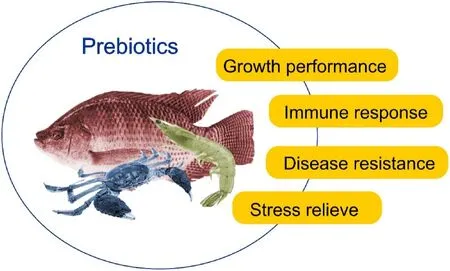
Fig.1.Effects of mixed prebiotics in aquaculture species.
2.Prebiotics
Prebiotic is any compound,substrate,long chain sugar,nutrient,or fibre that serves as food to the beneficial microorganisms in a host digestive system (Mountzouris,2022).Furthermore,a prebiotic is also defined as a substance resistant to the acidic environment in the stomach,can be fermented by gut microbiota and can promote the growth of gut microbiota to improve host health (Davani-Davari et al.,2019).In general,prebiotics are long chain complex carbohydrate that provide energy to beneficial microorganisms or probiotic to enhance an organism health.The sources of prebiotic are mostly derived from plant-based products (Mohammadi et al.,2020),edible mushroom (Balakrishnan et al.,2021) and only a few from animal dairy products.Prebiotics can be found naturally in vegetables,fruits,beans,seaweed,microalgae and animals’ milk (Ahmadifar et al.,2019;Al-Sheraji et al.,2013;Elumalai et al.,2021;Rashidian et al.,2018,2020;Van Doan et al.,2020).A prebiotic can prevent the attachment of harmful microorganisms to epithelial cells,eliminate harmful microorganisms from gut epithelial cells by acting as a receptor,acting as a modulator in the host immune system,and as an inflammation controller (Al-Sheraji et al.,2013;Mohammadi et al.,2021).
3.Prebiotics in aquaculture
Prebiotics or also known as beneficial compound,is the food or energy provider for good microorganisms (Tran &Li,2022).Prebiotic was used to promote growth of microorganisms living in the gut of organism with the intention to improve the health of host (Ringø et al.,2010;Sanders et al.,2019;Rohani et al.,2021).β-glucan,inulin,arabinoxylan oligosaccharide (AXOS),mannan oligosaccharide (MOS),galactooligosaccharide (GOS),fructooligosaccharides (FOS) and oligosaccharides are the commonly used prebiotics in aquaculture (Table 1).These prebiotics were reported to promote growth performance (Li et al.,2019),increase feed utilization efficiency (Shoaei et al.,2015),enhance immune system (Li et al.,2021) and stimulate disease resistance of aquaculture species (Abdel-Latif et al.,2022;Li et al.,2018;Yilmaz et al.,2022).Hence,there is no doubt application of prebiotic can help to increase production of aquaculture species.However,host gut microbiota is selective to prebiotic (Gibson et al.,2017).Not all prebiotics are universal to promote growth of the gut microbiota.For example,prebiotics FOS and GOS were found to promote gut microbiota such asLactobacillussp.andBifidobacteriumsp.(Gibson et al.,2017).This is becauseLactobacillussp.andBifidobacteriumsp.possess enzymes to ferment FOS and GOS (Teitelbaum &Walker,2002).Despite the facts,additional prebiotics supplemented in aquaculture feed can promote more species of gut microbiota in aquatic animals for health betterment.
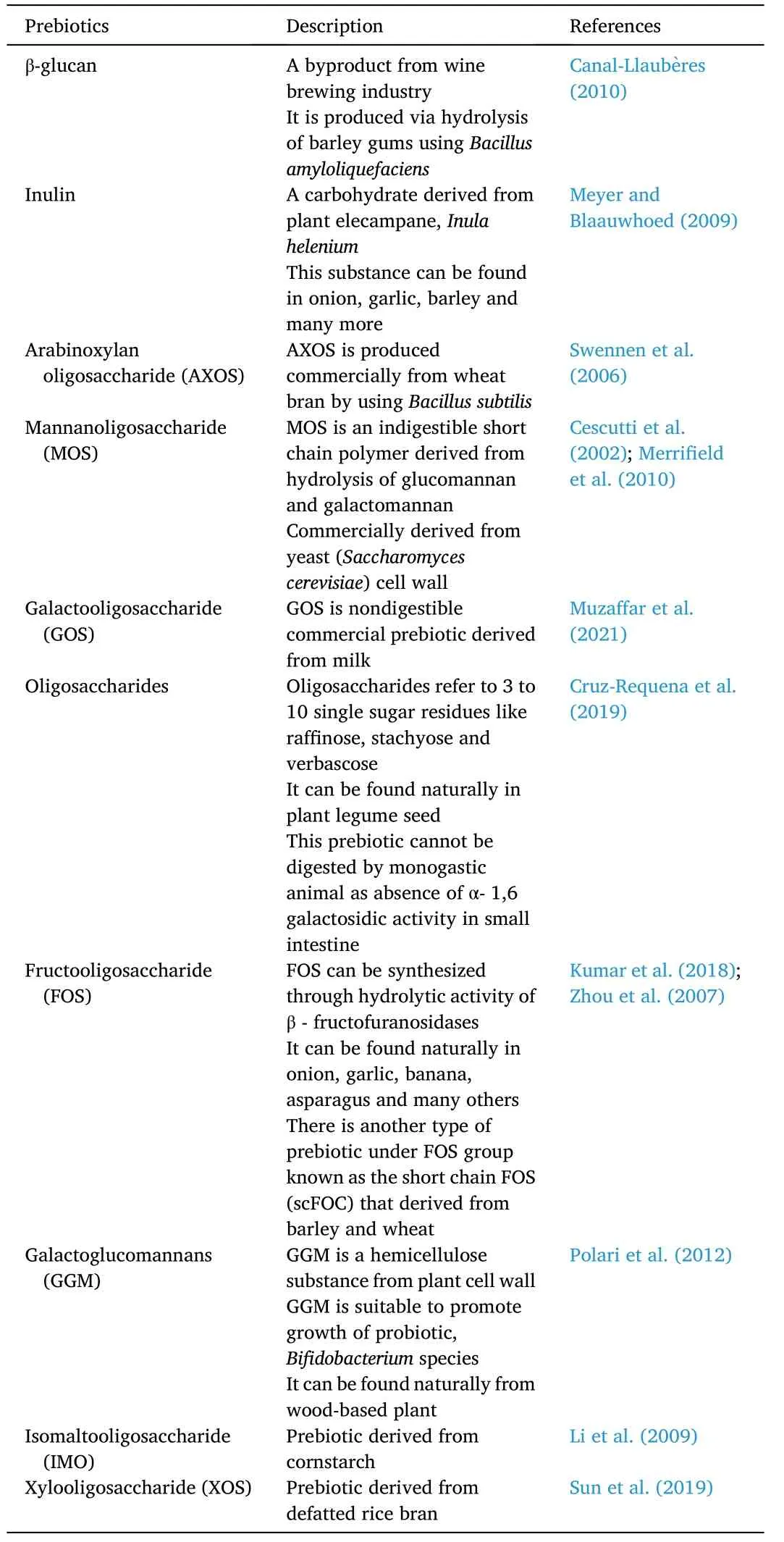
Table 1 Examples of prebiotics and their descriptions.
4.Effects of prebiotic mixtures on the growth performance of aquatic animals
Prebiotic can promote growth of gut microbiota in a host (Dawood &Koshio,2016).This may help to boost the growth of aquatic animals.Prebiotic can also increase feed utilization efficiency.Hence,it can lower feed conversion rate (FCR) and increase growth rate of aquatic animal (Ganguly et al.,2013).Based on literature survey,many types of prebiotic mixtures effectively promote the growth of various aquaticanimals.For example,FOS+GOS +MOS +GGM applied in red drum(Sciaenops ocellatus) (Zhou et al.,2010),inulin+FOS+GOS used inLitopenaeus vannameipost larvae (Oktaviana &Yuhana,2014),β-glucan+inulin +MOS used in Chinese mitten crab (Eriocheir sinensis) (Lu et al.,2019) and many more as shown in Table 2.Among the examples of prebiotic mixtures,Immunogen (β-glucan+MOS),a commercially available prebiotic mixture was proven to boost the growth of common carp (Cyprinus carpio) (Ebrahimi et al.,2012).Prebiotic,β-glucan was found in combinations with many other prebiotics to enhance growth of various aquatic animals.MOS is an ideal prebiotic that can combine with β-glucan effectively to boost growth of Nile tilapia (Oreochromis niloticus) (Ismail et al.,2019;Selim &Reda,2015),snakehead (Channa striata) (Munir et al.,2016),Caspian trout (Salmo trutta caspius) (Jami et al.,2019),Chinese mitten crab (Eriocheir sinensis) (Lu et al.,2019) andshabout (Tor grypus) (Mohammadian et al.,2021).Furthermore,MOS alone has demonstrated significant weight gain in gilthead sea bream(Sparus aurata) at the dose of 20–40 g/kg diet in the study of Gültepe et al.(2011) and Gültepe et al.(2012).However,MOS alone failed to enhance immune system and disease resistance of the fish.Thus,application of β-glucan and MOS as prebiotic mixtures can be used as aquaculture species growth booster.
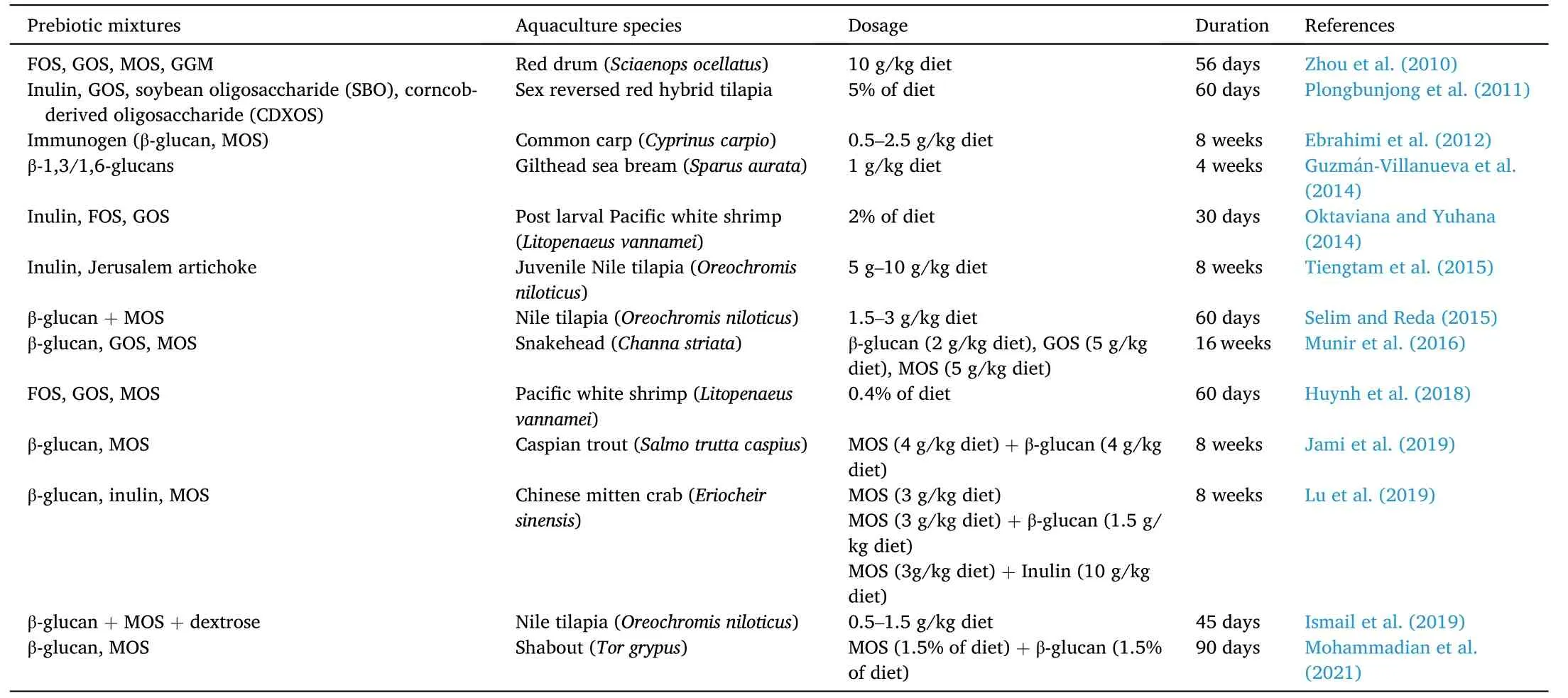
Table 2 The effects of prebiotic mixtures on the growth performance of aquatic animals.
5.Effects of prebiotic mixtures on the immune response of aquatic animals
Prebiotic is a complex carbohydrate that can provide an energy source to gut microbiota,thus it can enhance immune system of aquatic animals (Carbone &Faggio,2016;Mohammadi et al.,2022).Any prebiotic that can stimulate immune response of an organism is known as immunosaccharides (Nawaz et al.,2018).This immunosaccharides can be another option to use in aquaculture to alternate the role of antibiotic in aquatic animal health management (Hoseinifar et al.,2020;Vazirzadeh et al.,2020).There are two ways of using prebiotic to enhance immune response of aquatic animal,either through promotion of gut microbiota growth or activation of innate immune system of the aquatic animals (Song et al.,2014).However,host gut microbiota is selective to specific prebiotic.Hence,application of prebiotic mixtures will offer better effects on aquatic animal immune system (DeiviArunachalam et al.,2021;Elumalai et al.,2022;Kumar et al.,2022;Rashidian et al.,2022;Van Doan et al.,2018).Prebiotic mixtures that have been recognized as immunostimulants were β-1,3+1,6–glucans (Guzmán--Villanueva et al.,2014;S¸ahan &Duman,2010),FOS+GOS+MOS +GGM (Zhou et al.,2010),β-glucan+MOS (Lokesh et al.,2012),chitooligosaccharides+hydrolyzed shrimp shell chitin (Qin et al.,2014)and many more as shown in Table 3.

Table 3 Prebiotic mixtures as immunostimulants in aquaculture species.
Prebiotic mixtures such as FOS +GOS +MOS +GGM were reportedto enhance immune system on aquaculture species in red drum (Sciaenops ocellatus) farming (Zhou et al.,2010),chitooligosaccharides +hydrolyzed shrimp shell chitin in hybrid tilapia (Oreochromis niloticusXOreochromis aureus) farming (Qin et al.,2014),GOS+FOS+inulin in common carp (Cyprinus carpio) farming (Hoseinifar et al.,2017),and MOS+inulin in Pacific white shrimp (Litopenaeus vannamei) (Li et al.,2018).Although recent studies showed that combination or singly use of FOS,GOS,MOS,GGM and inulin able to increase aquaculture production,however,their application is not widely used like β-glucan.
β-glucan is commonly used in various aquaculture species,both marine and freshwater aquaculture species (Meena et al.,2013).This prebiotic can also be used in combinations with other prebiotics such as inulin,MOS and GOS in order to be immunostimulant to Nile tilapia(Oreochromis niloticus) (Abu-Elala et al.,2018;Salah et al.,2017;S¸ahan&Duman,2010),Atlantic cod (Gadus morhua) (Lokesh et al.,2012),gilthead sea bream (S.aurata) (Guzmán-Villanueva et al.,2014),snakehead (Channa striata) (Munir et al.,2016),Caspian trout (Salmo trutta caspius) (Jami et al.,2019),Chinese mitten crab (Eriocheir sinensis)(Lu et al.,2019) and shabout (Tor grypus) (Mohammadian et al.,2021).β-glucan is a universal prebiotic that can be widely used alone or combined with other prebiotics in enhancing immune system of aquaculture species,this statement was also agreed by Ching et al.(2021) where the study proposed β-glucan or its combination with other prebiotics can be a substitute for antibiotic treatment in aquaculture health management.Immunogen (β-glucan+MOS) is one of the commercially available prebiotic mixtures for aquaculture uses (Ebrahimi et al.,2012).
6.Effects of prebiotic mixtures on the disease resistance of aquatic animals
Prebiotic mixtures,β-glucan and MOS combination was widely reported in many studies that it can increase disease resistance of various aquatic animals.This prebiotic mixture was found to increase disease resistance of sea cucumber (Apostichopus) againstVibrio splendidus(Gu et al.,2011),Atlantic cod (Gadus morhua) againstVibrio anguillarum(Lokesh et al.,2012),common carp (Cyprinus carpio) againstAeromonas hydrophila(Ebrahimi et al.,2012),juvenile tiger shrimp (Penaeusmonodon) against (Andrino et al.,2014),Nile tilapia (Oreochromis niloticus) againstYersinia ruckeri,Aeromonas hydrophila,Lactococcus gravieaeandPseudomonas fluorescens(Abu-Elala et al.,2018;Ismail et al.,2019;Selim &Reda,2015) (Table 4).However,MOS alone was unable to enhance immune system and disease resistance of fish (Gültepe et al.,2012) whereas β-glucan alone was widely reported in many studies in improving aquatic animal growth,immune system and disease resistance.Based on the findings of recent studies,prebiotic mixtures of β-glucan and MOS is ideal to apply in aquaculture species.
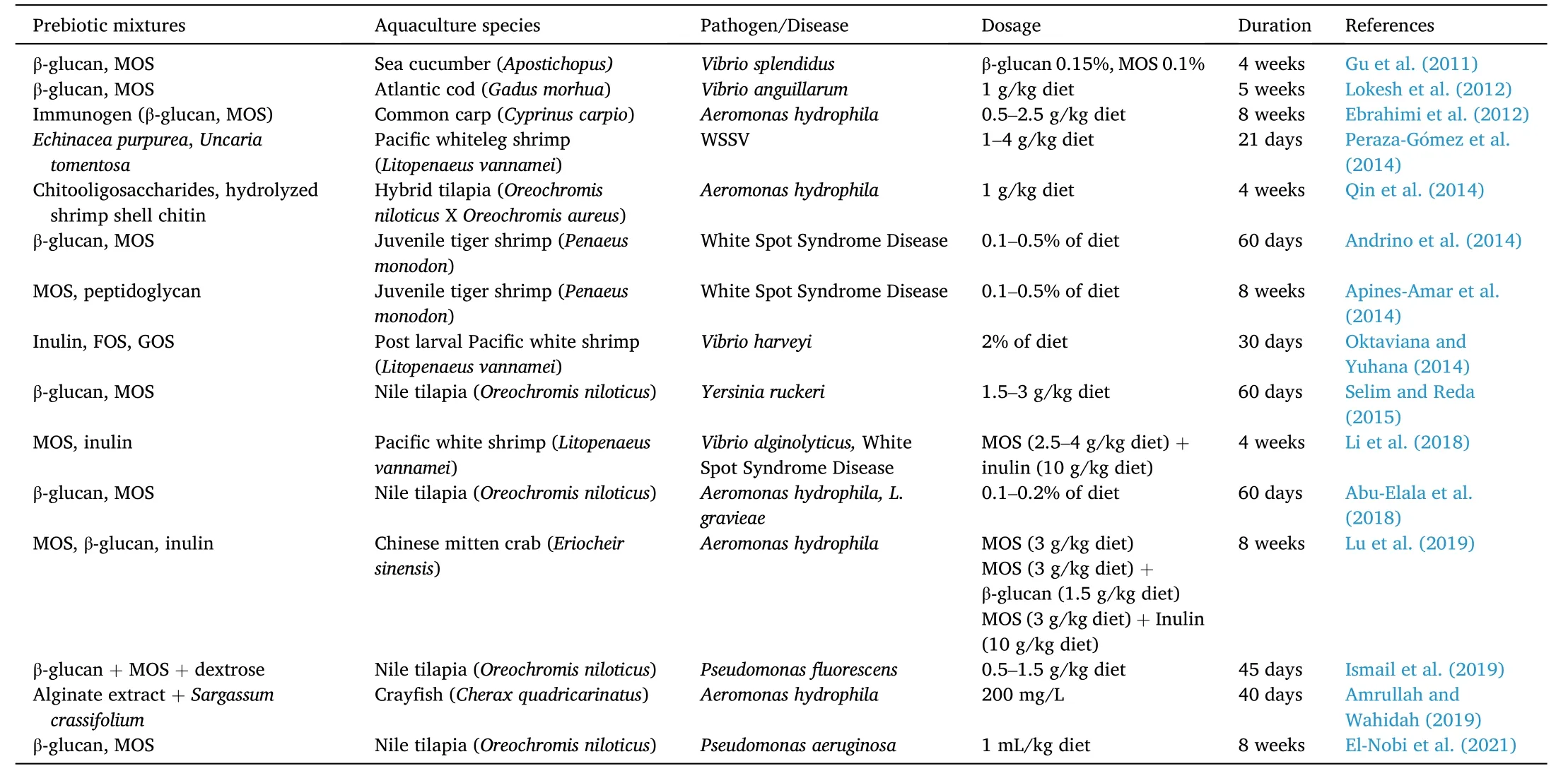
Table 4 Effects of prebiotic mixtures on the disease resistance of aquatic animals.
El-Nobi et al.(2021) claimed that a prebiotics mixture consisting of β-glucan and MOS can enhance disease resistance of Nile tilapia,Oreochromis niloticus,againstPseudomonas aeruginosainfection.The prebiotics mixture was found to outperform antibiotic,norfloxacin,in managing health of tilapia.Hence,a prebiotics mixture consisting of β-glucan and MOS can eliminate the usage of antibiotic in tilapia farming.In contrary,findings by Solidum et al.(2016) found that Pacific whiteleg shrimp (Litopenaeus vannamei) which have received prebiotic mixtures (β-glucan and MOS) at the dose of 0.8% per diet demonstrated a 100% mortality following exposure to vibriosis.Solidum et al.(2016)claimed that prebiotics given in overdose to the shrimp could lead to immunosuppression.However,similar prebiotic mixtures were effective to increase the survival rate of juvenile tiger shrimp (Penaeus monodon),as high as 81% when challenged against WSSV in the study by Andrino et al.(2014).The shrimps received prebiotics mixtures at 0.5% of diet for 60 consecutive days.Similar finding was also observed in the study by Apines-Amar et al.(2014) in which the tiger shrimp,Penaeus monodon,that received prebiotic mixtures (MOS+peptidoglycan) at 0.1–0.4% of diet was resistant to WSSV.Therefore,proper dosage of the prebiotic mixture must be determined to avoid the consequence of immunosuppression.
7.Effects of prebiotic mixtures on the abiotic stressors
Abiotic factors have a huge impact on aquaculture production(Mugwanya et al.,2022).Fluctuations of abiotic factors out of the optimal range may lead to sudden death and disease outbreak in aquaculture species.The main intention of intensification of aquacultureindustry is to produce cost effective and affordable price aquaculture products,but this may put aquaculture species in the farming system under stress (Das et al.,2017).There are very few or none of the studies that focus on prebiotic mixtures in relieving abiotic stress of aquaculture species.However,there are some studies revealed the potential of prebiotic alone in easing stress of aquaculture species.For example,β-glucan alone was found to ease stress of red sea bream (Pagrus major)in the study by Dawood et al.(2016).FOS alone was also reported can reduce stress of common carp (Cyprinus carpio) (Hoseinifar et al.,2014).Some of the prebiotic can only perform its function under optimal environment.For instance,scFOC was found to promote the growth of gilthead sea bream (Sparus aurata) at cool environment with temperature around 18◦C but scFOC was inactivated at 25◦C (Guerreiro et al.,2015).Similarly,Guerreiro et al.(2015) observed that the growth of European sea bass (Dicentrarchus labrax) which received scFOC at 18◦C environment was significantly better compared to environment at 25◦C.This showed that abiotic factor like temperature manipulated the effectiveness of prebiotic.Till present,only Hoseinifar et al.(2017) reported on how prebiotic mixtures (GOS,FOS,inulin) can be used to relieve stress in aquaculture species,as proven by gene expression(Table 5).
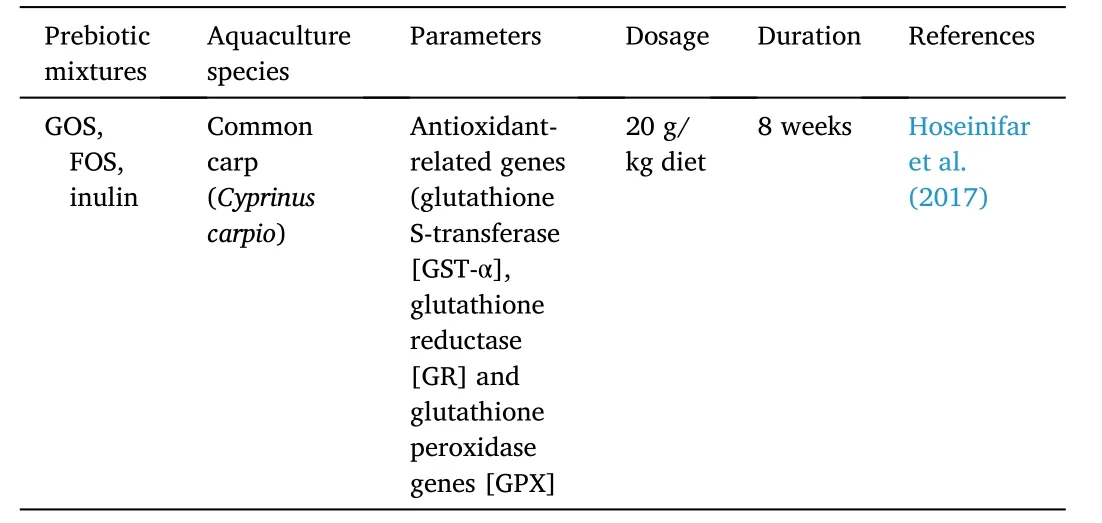
Table 5 Effects of prebiotic mixtures on the aquaculture abiotic stressors.
8.Conclusion and future perspectives
To the best of our knowledge,this review is regarded the first to emphasize on the application of prebiotics mixtures for aquaculture species.Most of the studies cited in the present review largely concerned with the beneficial effects of prebiotic mixtures as feed additives,which able to increase aquaculture production by promoting growth,enhancing the immune system,stimulating disease resistance,and reducing the stress of aquatic animals.As a result,this promote the sustainability of aquaculture.However,there are limited studies conducted to evaluate the potential of prebiotic or prebiotic mixtures in reducing stress in aquatic animals.β-glucan is a universal prebiotic as it can work effectively alone or combined with other prebiotics like MOS.Nonetheless,considerations on proper dosage and types of prebiotics must be taken when applying prebiotics to the aquaculture species.A high dosage of prebiotics may lead to adverse effect to aquatic animal whereas some type of prebiotic is only able to improve growth but not immune system and disease resistance of aquatic animals.There is still a gap between scientific findings and practical use of prebiotics in aquaculture species.
CRediT authorship contribution statement
Wendy Wee:Conceptualization,Writing– original draft,Writing–review &editing.Noor Khalidah Abdul Hamid:Writing– review &editing.Khairiyah Mat:Writing– review &editing.Raja Ili Airina Raja Khalif:Writing– review &editing.Nor Dini Rusli:Writing–review &editing.Mohammad Mijanur Rahman:Writing– review &editing.Muhammad Anamul Kabir:Writing– review &editing.LeeSeong Wei:Funding acquisition,Supervision,Project administration,Writing– original draft,Writing– review &editing.
Acknowledgement
This project was funded by the Ministry of Education Malaysia under the scheme of Fundamental Research Grant Scheme (FRGS) with the code no.R/FRGS/A07.00/00387A/005/2013/00107 and Niche Research Grant Scheme (NRGS) vot no: R/NRGS/A0.700/00387A/006/2014/00152.
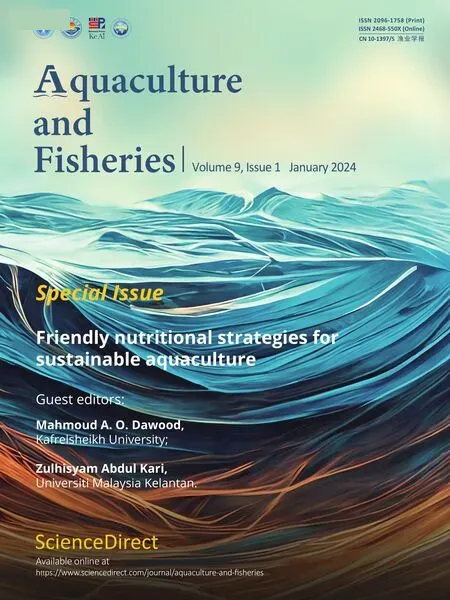 Aquaculture and Fisheries2024年1期
Aquaculture and Fisheries2024年1期
- Aquaculture and Fisheries的其它文章
- Selected dietary plant-based proteins for growth and health response of Nile tilapia Oreochromis niloticus
- The roles of polysaccharides in tilapia farming: A review
- Growth performance,fatty acid profile,gut,and muscle histo-morphology of Malaysian mahseer,Tor tambroides post larvae fed short-term host associated probiotics
- Evaluation of growth performance,feed efficiency and nutrient digestibility of red hybrid tilapia fed dietary inclusion of black soldier fly larvae(Hermetia illucens)
- Effects of dietary astaxanthin enrichment on enhancing the colour and growth of red tilapia,Oreochromis sp.
- Microbial,immune and antioxidant responses of Nile tilapia with dietary nano-curcumin supplements under chronic low temperatures
